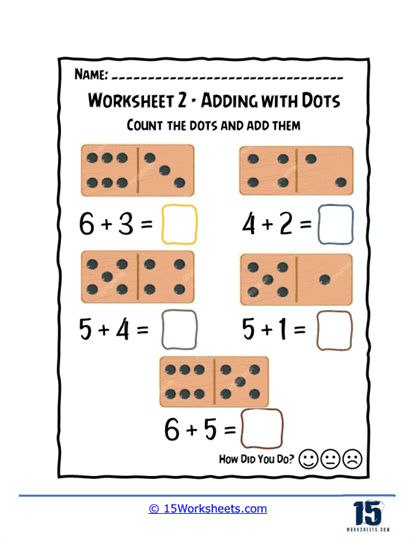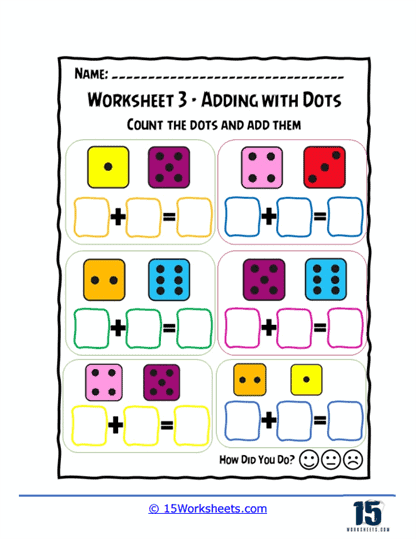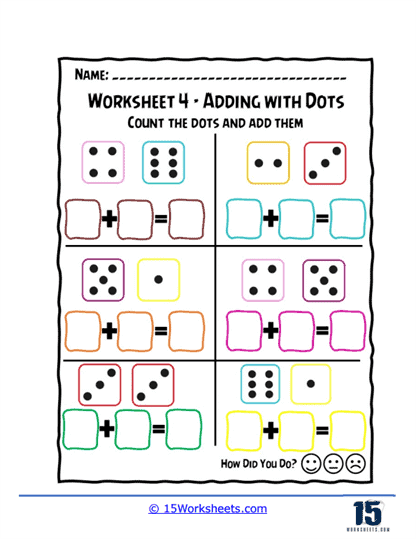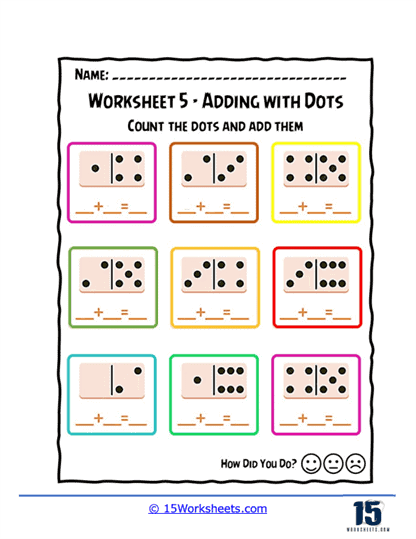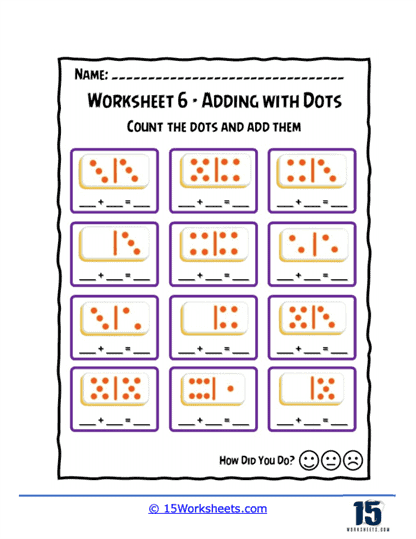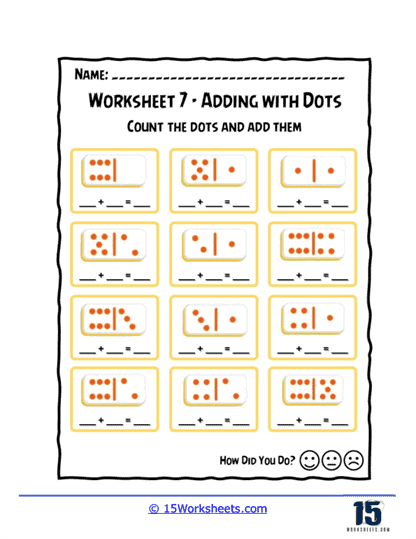Adding with Dots Worksheets
About These 15 Worksheets
Our “Adding with Dots” worksheet collection offers a refreshing and hands-on approach to teaching early math concepts, especially addition. At their core, these worksheets help young learners visualize numbers in a concrete and intuitive way-each dot representing a single unit that kids can see, count, and understand. This tactile strategy transforms abstract arithmetic into something children can physically track with their eyes and fingers. With a variety of formats and increasing levels of difficulty, the collection accommodates learners at different stages, making it a versatile tool in both classrooms and homeschool settings.
A typical worksheet might show two clusters of dots-say five and three-inviting children to count all the dots together and discover the total. It’s a simple exercise on the surface, but incredibly powerful for developing number sense. By consistently engaging with these visual representations, students begin to internalize the logic of addition: that combining two groups results in a larger quantity. Other variations encourage children to add more dots to an existing group or to identify how many are missing to reach a given total. These formats reinforce the concept of addition as a dynamic, flexible operation, rather than just memorized sums.
Some worksheets go even further, integrating simple word problems that bring math into real-life contexts. A child might be asked to imagine receiving apples from a friend and use dots to figure out how many they have altogether. These scenarios not only develop arithmetic skills but also introduce the idea that math is something we use in everyday life-not just something we do on paper. The inclusion of visual problem-solving enhances comprehension and provides an entry point for learners who may struggle with purely numeric exercises.
For educators and homeschoolers, this collection offers much more than rote practice. The clear, child-friendly layout supports independent learning, allowing students to build confidence at their own pace. The emphasis on visual learning ensures that a wide range of learning styles are supported, especially for kinesthetic and visual learners. Used alongside broader math instruction, these worksheets can help lay a solid foundation for future math success-by turning simple dot-counting into a meaningful and memorable learning experience.
The Benefits
These worksheets provide a visual and hands-on approach to learning addition, which can be particularly beneficial for visual learners and those who struggle with abstract concepts. By representing numbers with dots, students can physically count and manipulate the dots, aiding in their understanding of addition as combining quantities.
These worksheets help students develop their counting skills and number sense. By repeatedly counting sets of dots, students reinforce their ability to count accurately and efficiently, which is essential for performing addition calculations. Additionally, working with dot representations helps students develop a strong sense of number magnitude and relationships, as they learn to recognize patterns and groupings within the dots.
Practicing addition with dot representations enhances students’ conceptual understanding of addition as a mathematical operation. Rather than simply memorizing addition facts, students learn to visualize the process of addition as combining quantities to find a total. This deeper understanding of addition lays the foundation for more advanced mathematical concepts and problem-solving strategies in the future.
Adding with dots worksheets can be adapted to accommodate students at different skill levels and learning styles. Teachers can modify the difficulty of the exercises by adjusting the number of dots or the complexity of the problems, ensuring that each student is appropriately challenged and supported in their learning journey.
These worksheets are great to help students develop their understanding of basic addition skills. Through visual representations of dots, these worksheets provide students with a concrete and hands-on approach to learning addition, helping them build counting skills, develop number sense, and deepen their conceptual understanding of mathematical operations. By incorporating various types of exercises and adapting to individual student needs, Adding with Dots Worksheets offer an effective tool for enhancing students’ mathematical proficiency and confidence in addition.


